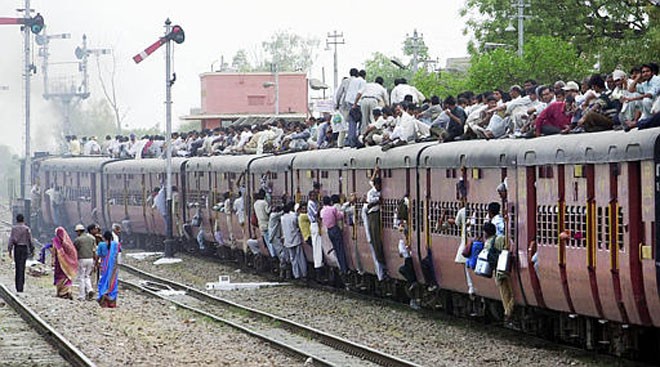

One wonders what strategies did Lalu Prasad Yadav, the previous Indian minister for railways, adopt to make Indian railways a success story. How did the Indian railways turn into a profitable public sector entity?
The Indian Railways was heading towards a financial collapse in the year 2000 as its infrastructure was crumbling due to poor maintenance, which also caused accidents. The then railways minister, Nitish Kumar, spent 17,000 crore rupees in upgrading the infrastructure.
It is said that Yadav, as the Minister of Indian Railways from 2004 to 2009, transformed this enterprise without privatising it, or layoffs or price increases. The turnaround of Indian Railways happened in just four years between 2005 and 2008 and this public sector organisation was transformed from near bankruptcy to post US $6 billion annual cash surplus in 2008.
When Yadav took over as railways minister, he inherited the base prepared by Nitish, his predecessor. He constituted a team under a civil service officer, Sudhir Kumar, and gave him the task of improving the finances of the organization and that without any big downsizing or increase in fares. The team was able to show the difference, the biggest was to align tariffs and important decisions regarding freight with the goal of maximising overall returns. In a way, the success achieved was only partial. The gains were not consolidated.
Yadav made alliances with private companies to meet the customer demand and co-opted competition. The vast real estate that Indian Railways owned was used for more productive purposes. He made the Indian trains run faster and longer.
Indian Railways is claimed to be one of the world’s largest railway networks comprising 115,000 kms of track over a route of 65,436 kms and 7,172 stations. It owns locomotive and coach production facilities at several places in India and are assigned codes identifying their gauge, kind of power and type of operation. The operations cover twenty nine states and seven union territories and also provide limited international services to Nepal, Bangladesh and Pakistan.
Indian Railways is stated to be as the world’s seventh largest commercial or utility employer, by number of employees, with over 1.307 million employees as of last published figures in 2013. Indian Railways earns about 70 per cent of its revenues from freight traffic. This makes up for losses on passenger traffic. It deliberately keeps its passenger fares low and subsidises the loss-making passenger traffic with the profit-making freight traffic. Research Designs and Standards Organisation (RDSO), located at Lucknow, does research, designs and standardisation tasks.
In August 2013, the railways reportedly entered into a partnership with Indian Institute of Technology (Madras) to develop technology to tap solar energy for lighting and air-conditioning in the coaches. This would significantly reduce the fossil fuel dependency for Indian Railways.
There are two UNESCO World Heritage Sites on Indian Railways -- the Chatrapati Shivaji Terminus and the Mountain Railways of India.
Not everything is fine with the Indian railways though. The railways is reportedly losing market share to other modes of transport both in freight and passengers. New railway line projects are often announced during the Railway Budget annually without securing additional funding for them.